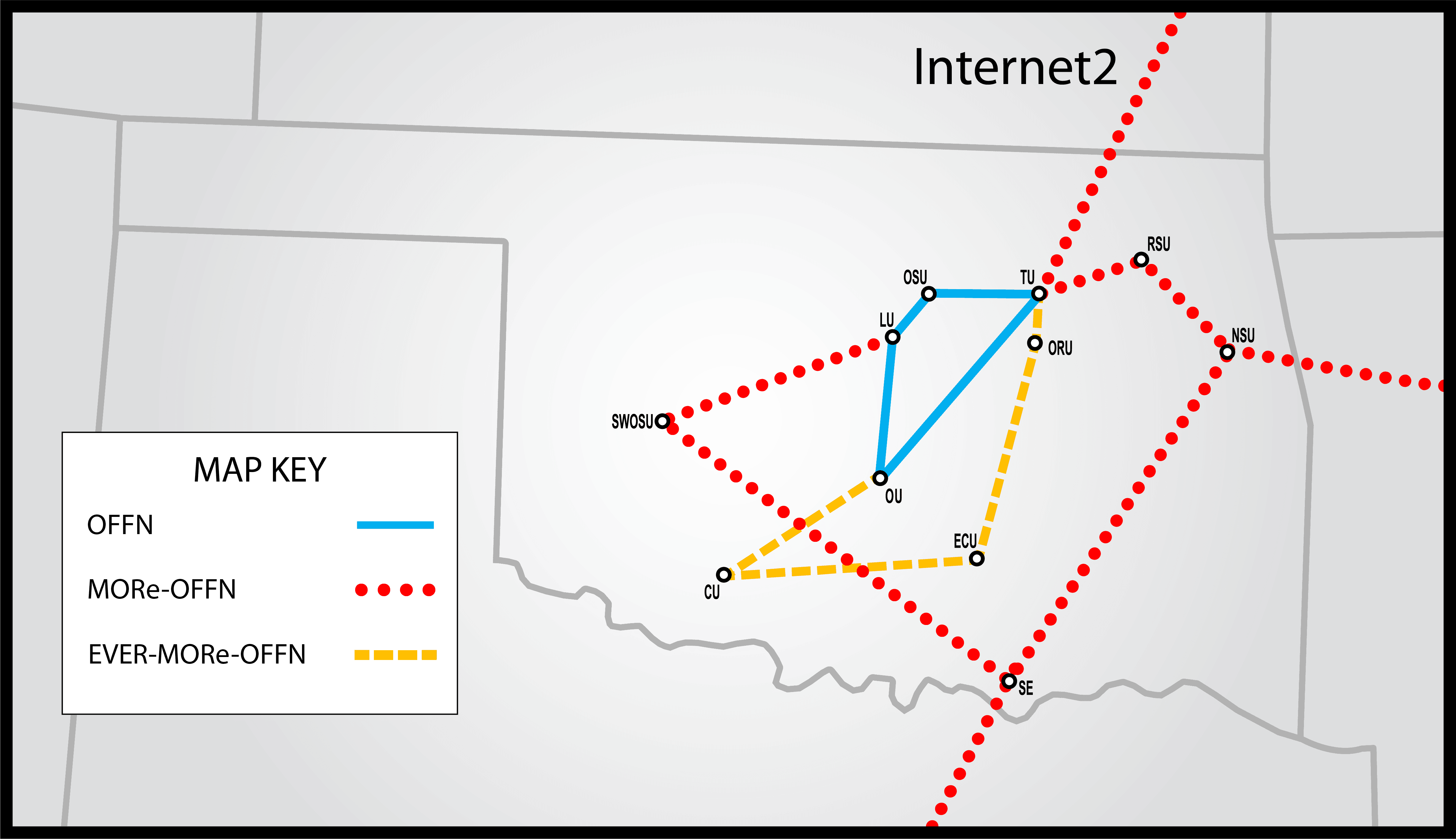Oklahoma’s Science DMZ Expands Access to High-Performance Research Computing
Scientific discovery is at the forefront of higher education institutions’ missions across the state. From bioinformatics to galaxy formation, researchers and students are pursuing innovative investigations to further scientific knowledge and education. A vital component in furthering this mission is the network requirements for data-intensive science.
To help higher education institutions access the high-speed networks required for research computing, the Energy Sciences Network (ESnet) developed a network infrastructure design that would meet these networking requirements. Their Science DMZ model engineers a portion of a campus network for science applications. According to ESnet, the configuration and security policy design of a Science DMZ create an environment tailored to meet high-performance scientific computing needs, including high-volume data transfer, remote experiment control and data visualization.
In 2013, a group of higher education institutions’ researchers envisioned creating a dedicated, multi-institutional and research-only Science DMZ for Oklahoma. The initial idea leveraged OneNet’s network and facilities to interconnect higher education computational facilities. OneNet, the comprehensive, digital initiative of the Oklahoma State Regents for Higher Education (OSRHE), delivers high-speed internet and network services to all public higher education institutions in the state, as well as most of the private higher education institutions.
The new Science DMZ project, named OneOklahoma Friction Free Network (OFFN), would extend OneNet’s existing network to provide Oklahoma research institutions with dedicated network pathways to facilitate research that requires large data transfer and speed. These dedicated pathways separate the research traffic from regular business traffic such as email and web browsing, ensuring research-grade performance.
OneNet connects participating OFFN institutions at a minimum of 10Gbps, transitioning to 100Gbps as it becomes available. These connections provide researchers and students with access to advanced data transfer channels, increasing research and education potential and improving student learning and advancement.
The OFFN network was funded through a series of grants from the National Science Foundation (NSF), beginning with $499,961 in funding in 2013 for the initial network, $333,859 in funding in 2018 for the Multiple Organization Regional OneOklahoma Friction Free Network (MORe-OFFN), and $500,000 in funding in 2019 for the Extended Vital Education Reach Multiple Organization Regional OneOklahoma Friction Free Network (EVER-MORe-OFFN).
Currently the OFFN network connects 11 higher education institutions, including the state’s research-tier universities and several regional universities. In 2020, OneNet applied for a fourth NSF grant to connect five small institutions to the network.
Research scientists at these universities are taking advantage of data transfer speeds and shared supercomputing resources for investigation such as bioinformatics at Oklahoma State University, high-energy physics at the University of Oklahoma and Langston University, biological science in peanut studies at Southeastern Oklahoma State University and molecular modeling at Southwestern Oklahoma State University.
Other science supported by the network includes genomics at Oral Roberts University, seismic imaging at the University of Tulsa, nanoscale systems at East Central University and galaxy formation studies at Cameron University. At Rogers State University, the network enables atomic gas turbulence research, and at Northeastern State University, researchers are utilizing the network for computer science modeling.
“OneNet’s role is to facilitate research and education in Oklahoma,” said Vonley Royal, OneNet’s executive director and Oklahoma’s higher education chief information officer. “By expanding access to Science DMZ networks like OFFN, we hope to increase the quality of scientific discovery and education in our state.”
As more higher education institutions gain access to high-speed network channels and participate in more collaborative research projects, faculty and student researchers will have more opportunities to engage in ground-breaking initiatives that will make a positive impact in Oklahoma and beyond. Through this collaborative initiative, OneNet, OFFN and the participating institutions are helping change the face of research and education.

